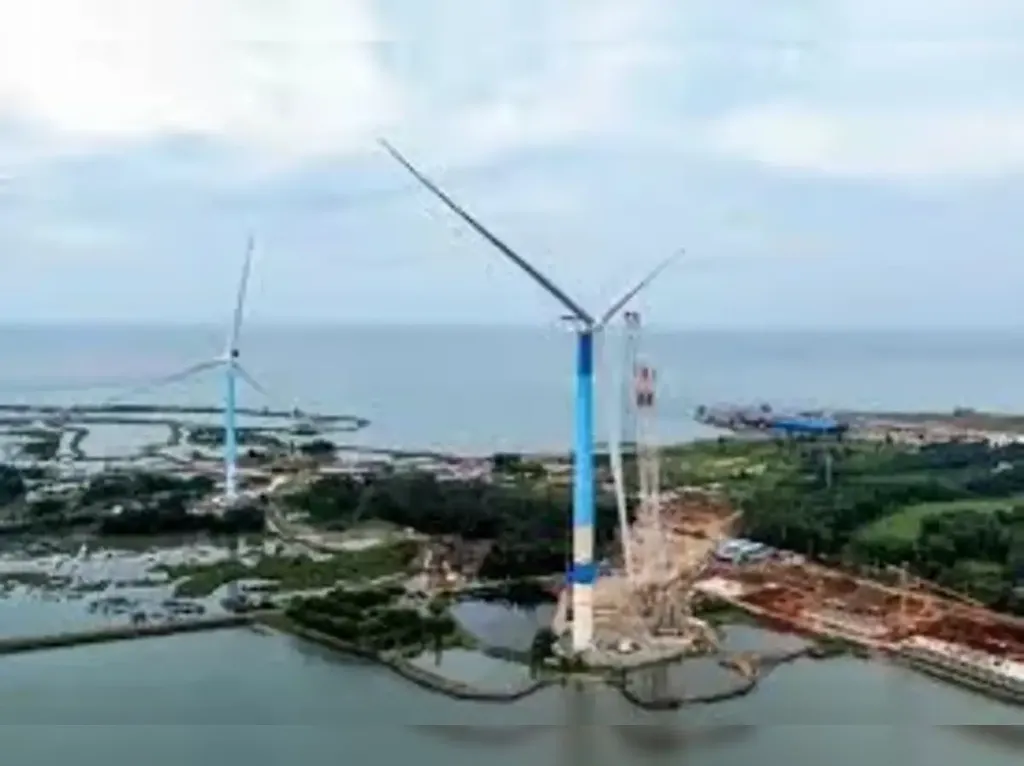In the bustling world of construction, tower cranes are indispensable, but their susceptibility to wind-induced vibrations poses significant challenges. A recent study published in *Mechanical Sciences* (which translates to *Mechanical Sciences* in English) introduces a groundbreaking solution that could revolutionize the way we control these vibrations. Led by L. Yang from the School of Mechanical Engineering at Southwest Jiaotong University in Chengdu, China, the research presents a novel bi-directional tuned mass damper (Bi-TMD) that promises to enhance the stability and efficiency of tower cranes, particularly in the energy sector.
Traditional methods of controlling wind-induced vibrations in tower cranes often involve top-mounted or mid-tower dampers, which can be spatially and structurally limiting. Yang’s innovative design overcomes these constraints by integrating the Bi-TMD into the counterweight of the crane. This rear-mounted system replaces a portion of the concrete ballast with movable masses on spring-damper units, preserving the crane’s lifting capacity while enabling bi-directional control of both sway and torsional vibrations.
The study’s findings are compelling. Using finite-element simulations under Kaimal-spectrum fluctuating wind loads, the researchers demonstrated that the Bi-TMD, with a 5% modal mass ratio, reduces peak tower-top acceleration by approximately 49% and displacement by 24%. “This design not only preserves the crane’s lifting capacity but also significantly enhances its stability under windy conditions,” Yang explained.
The research also highlights three key insights: first, the counterweight-mounted TMD provides effective vibration suppression, particularly for along-wind sway, without compromising structural integrity; second, an optimal modal mass ratio of 3%–4% maximizes control efficiency and avoids local resonance, especially under cross-wind conditions; and third, the rear-mounted Bi-TMD achieves 75%–91% of the performance of a mid-mounted TMD while avoiding spatial interference at the tower head.
The implications for the energy sector are substantial. Tower cranes are crucial for the construction of wind turbines and other energy infrastructure. By enhancing the stability and efficiency of these cranes, the Bi-TMD technology can lead to safer and more cost-effective construction processes. “This innovation could be a game-changer for the energy sector, particularly in regions prone to high winds,” Yang noted.
The study’s findings suggest that the Bi-TMD is a practical and scalable solution for retrofitting existing cranes and for use in space-constrained environments. As the energy sector continues to expand, the demand for reliable and efficient construction equipment will only grow. This research paves the way for future developments in vibration control technologies, potentially shaping the next generation of tower cranes and other heavy machinery.
In summary, L. Yang’s research represents a significant advancement in the field of construction technology. By addressing the challenges of wind-induced vibrations in tower cranes, this innovative Bi-TMD design offers a promising solution that could enhance safety, efficiency, and cost-effectiveness in the energy sector and beyond. Published in *Mechanical Sciences*, this study underscores the importance of ongoing research and innovation in mechanical engineering, driving progress and shaping the future of construction.

